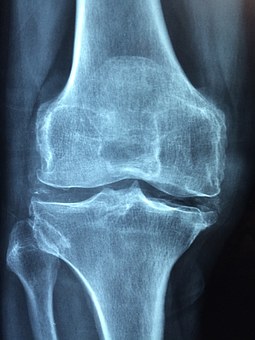Joints are literarily pivotal for movement. There’s hardly any time we move without using our joints. It is intrinsic to our way of life. This is the reason we struggle when something goes wrong with any of our joints. A joint is practically the joining or meeting of two different bones. Also, other structures make a joint stable and effective. Some cartilages protect the surface of the bones from friction. Also, there are tendons, which attach to parts of the bone either at the end of the other bone or across the joint. Blood vessels and nerves travel along these joints as well. Therefore, if anything abnormal affects these structures above, it can mare the integrity of the joints. This is part of the reason people feel pain and stiffness in their joints.
Several joints operate like a hinge such as knees and elbows, whereas others allow for a more complicated movement like shoulder or hip joint, allowing movement in any direction. Rigid joints will girdle the bone structure of an individual to withstand forceful tasks. Most importantly, joints provide stamina as seen in sports like football and boxing. Research has proved that more than half of the individuals from the developed nation have joint problems.
If you or loved ones have joint problems, how can it be treated, and how can it be prevented? The best option is to visit the hospital once your joints get stiff for more than a few days. Below are treatments and prevention tips for joint stiffness and joint pain.
The Wonders of Ice
Our body responds to temperature differently and in different situations. A cold temperature relives swelling in the body, especially the joints. If you’re experiencing joint pain, apply ice pack or frozen vegetables wrapped in a towel to the surface. Do this for about half an hour, and you’ll get relieved almost instantly. However, it depends on the severity and location of the pain. Studies and experience have shown that cold therapy is fantastic for joint pain. Practice the application of ice pack on your joint, and you’ll be marveled at the relief that follows.
Soak yourself in Warm Water
I remembered stories of my old nanny who seemed to combat everything with a warm bath. There was a time she had joint pain of the ankle and toes, and she merely dipped her legs for a few minutes and massaged it and felt better immediately. Warm water or towel dipped in hot water can actually provide lasting relief for joint swelling or pain that has been long-lasting. In order to get maximum results, you can apply an ointment or essential oils.
Social health and Your Joints
The SDG (Sustainable Development Goals) has health as the third goal to be achieved globally. Good health requires a balanced diet, adequate rest, routine exercises, as well as healthy social interactions. Chances are low for one to live a sedentary if one attends good social events and visits other people regularly as time permits. There may game at such events, and one gets to move one’s joints, making it more perfumed with nutrients, more flexible, and stronger.
Exercise is Vital for Strong Joints
In addition to the point above, exercise is important for healthy bones and strong joints. If you exercise often, you are helping your joints, bones, heart, blood vessels, and your body as a whole. People with an active, athletic lifestyle have been observed to suffer less from joint problems. One of the best ways to keep joint stiffness and pain at bay is to exercise regularly.
Ankylosing Spondylitis
This is a type of arthritis that affects the joints of the backbone. It is referred to as bamboo spine because it gets so stiff that typical bending is almost impossible. This form of arthritis affects the entire body, as it is a systemic rheumatic disease. Its treatment and prevention is joint replacement, NSAIDs like Ibuprofen, and exercises, as well as physical therapy. For a disease that was first discovered in Egyptian Mummies, constantly exercising keeps your spine alive and prevents the systemic problem.
Potts Disease
Potts disease is a medical condition that arises from tuberculosis as a complication. The mycobacterium that is causative of TB spreads to other parts of the body, especially the vertebral column. The prevention of the affection of the joints in the spine due to Tuberculosis is the prompt treatment of TB. If the appropriate antibiotics are used, and one is compliant, then the disease will not spread to the backbone, leaving the intervertebral joints unaffected. Drugs like Rifampicin, Isoniazid, Pyrazinamide, Ethambutol, and Streptomycin are used to treat Tuberculosis patients intensively.
Medications
If you have joint pain and stiffness, there are over-the-counter drugs you can take for a quick resolution. However, always make sure you get diagnosed by a doctor and then get the pills based on his or her prescription.
There are several ways to ensure that your joints are protected from stiffness and pain. Even it happens, there are ways to get it resolved either through home remedies for joint stiffness and pain or through pharmacological medications. If you have joint pain and stiffness, and it’s not improving visit your physician for correct diagnosis and treatment. Don’t forget it’s better to prevent the occurrence of any disease before it happens. Below are medications that can be taken to fight the stiffness and pain that may affect joints.
- Adalimumab
- Celecoxib
- Diclofenac
- Etanercept
- Golimumab
- Ibuprofen
- Indomethacin
- Infliximab
- Naproxen
- Phenylbutazone
- Rofecoxib
- Secukinumab
- Sulfasalazine
- Tocilizumab
In conclusion, there has been a tremendous positive medical impact on stiff joint problems. This cuts across daily basic activities as well as long term planning. Every healthy individual derives strength from the healthy state of their joint. This, of course, supports daily movement and provide us with physical fitness. Stiffness of the joints may be as a result of other deep-rooted problems, so make sure you visit a doctor instantly once you start feeling such rigidity




